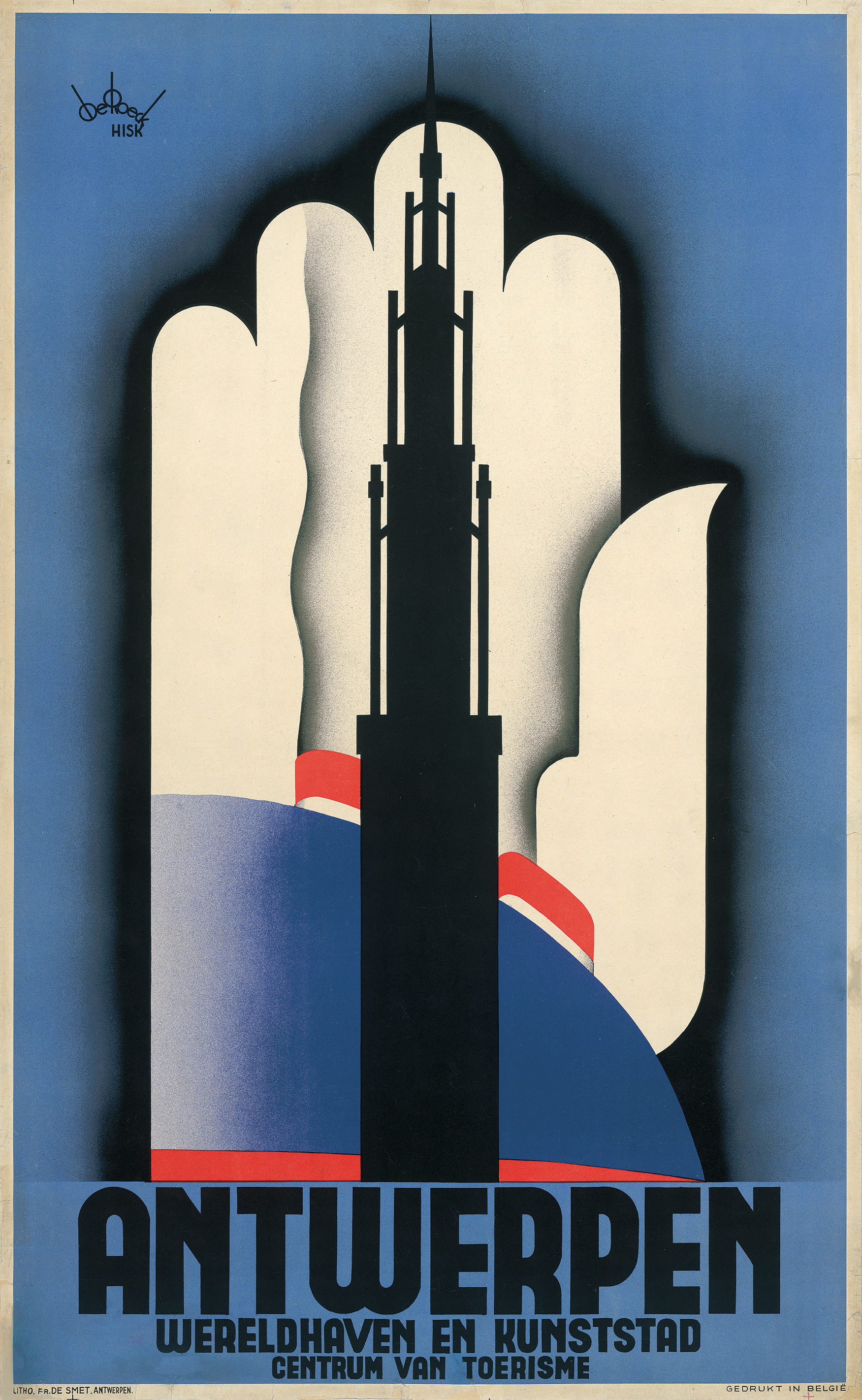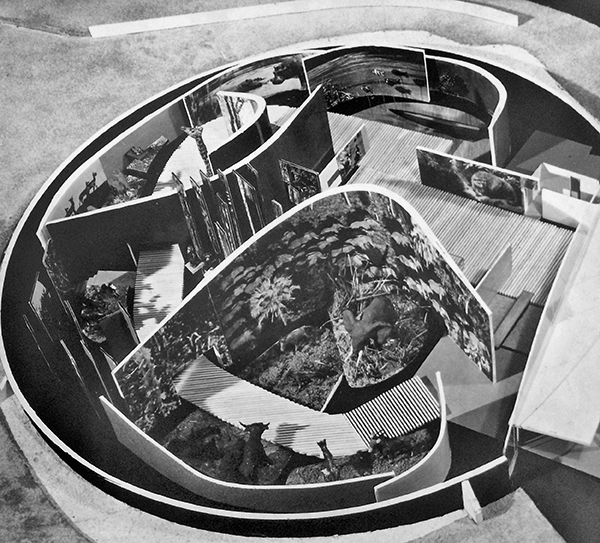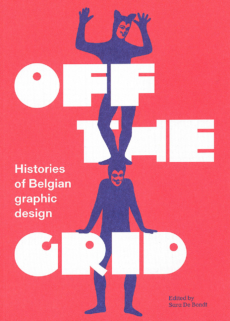Summer 2022
Icons of oppression
Belgian graphic design and the colonisation of Congo. By Sara De Bondt

On 30 June 2020, the statue of King Leopold II was removed from the Zuidpark in Ghent. A few weeks earlier, other statues were vandalised or removed in Brussels and Antwerp. In recent years, the Belgian colonisation of Congo has once again come under the spotlight. Today, this decolonising movement is accelerating as part of a global reassessment of the continuing impact of colonialism.
Decolonisation is also increasingly being discussed in graphic design. In 1998 Sylvia Harris wrote: ‘Black designers are working at a disadvantage when they do not feel a kinship with existing design traditions and also have no evidence of an alternative African or African-American design tradition upon which to base their work.’
More recent initiatives point to the considerable work that still needs to be done – think of Silas Munro’s online lecture series ‘BIPOC Design History’; the platform Decolonising Design by Danah Abdulla, Ahmed Ansari and others; the online Decolonizing Design Reader by Ramon Tejada; or the exhibition ‘As, Not For: Dethroning Our Absolutes’ by Jerome Harris (see Eye 100). So it was essential that the subject should be included in the overview of Belgian design history of which this essay is part. (Off the Grid, Histories of Belgian graphic design, published by Occasional Papers, 2022.)
Lucien De Roeck’s well known poster for the city of Antwerp, 1935, courtesy Fonds Lucien De Roeck. Top. Poster for Colonial Days: Under the high patronage of His Majesty the King, 1924, courtesy Collection KMMA, Tervuren. Joseph van den Bergh’s duotone poster uses the widely recognisable image of the late Belgian monarch, Leopold II (1835–1909), as a ‘logo’ for colonisation.

What was the role of Belgian graphic designers in the colonisation of Congo between 1885 and 1960? Lucien De Roeck’s poster Antwerpen (1935) is one of the best known icons of Belgian graphic design, but if you view the poster within the tradition of the maritime colonisation propaganda of the port of Antwerp, you see that the design fits into a series of posters of the same size and with a comparable composition. Graphic design supported Belgium’s colonising enterprise, giving it the visual and typographic tools it needed to carry out its task. Successful designers such as Victor Horta, Paul Hankar, and Henry van de Velde also worked at the service of the colonisation agenda and there are links between Art Nouveau and Congo, to the point that Art Nouveau was called ‘Congo style’, and its characteristic graphic line the ‘whiplash line’, a reference to the corporal punishment of Congolese which was standard practice.
Alphonse-Jules Wauters was a graphic designer avant la lettre, a publisher, journalist, geographer, painter, and art teacher. His weekly magazine Le Mouvement Géographique (1884-1922) was an influential promotional tool for the colonisation of Congo. The magazine, printed on newsprint, appeared every Sunday. Wauters’ map of 8 March 1885 visualises how Leopold II took over a large part of the African continent at the Berlin Conference (1884-85). The word ‘Possessions’ appears next to a brightly coloured legend: pink for France; orange for Portugal; red for Great Britain, etc. The largest part of the map, however, is a calming, positive green colour, captioned ‘État libre du Congo’ (Congo Free State), its boundaries drawn crudely with a ruler, as if they were vague and not definitive, and the word ‘inexploré’ (unexplored) printed on top.
Political map of Central Africa, its boundaries drawn crudely with a ruler, printed in a supplement to Le Mouvement Géographique, Institut national de géographie, 1885. Attributed to Alphonse-Jules Wauters, courtesy Collection KMMA, Tervuren.

The king transformed his private property into a genocidal marauding machine and graphic design became a useful communication tool – maps gave tiny Belgium a powerful status, comparable with its gigantic area of exploitation, which was 77 times the country’s size. While the cartography was deliberately vague, the flag was a clear symbol. Leopold II recycled the banner of the Association Internationale Africaine as an emblem for his Congo Free State. The flag, with its yellow star on a blue background, was planted all over the newly conquered territories.
An important element of Leopold’s colonialist propaganda were the many World’s Fairs in Belgium (Brussels, 1897, 1910, 1935, 1958; Liège, 1905; Ghent, 1913) and their arsenal of posters, floor plans, newspaper supplements and souvenir booklets. ‘In total, this veritable exoticism industry reached nearly 1.5 billion visitors between 1810 and 1940, exhibiting more than 30,000 people,’ reads an entry on the AfricaMuseum website africamuseum.be. During these colonial exhibitions in Belgium, Congolese men, women and children were staged in fake villages and many became sick or died. As AfricaMuseum states, ‘The presence of these exhibitions in popular culture undoubtedly contributed to the racism that can still be seen in Western societies today.’
Poster for General World Exhibition of Brussels, designed
by J. Gilbert and P. Van Brempt, 1910. Courtesy Collection KMMA, Tervuren.

Poster for the International exhibition Brussels, Park of
the Golden Year and Park of Tervuren, designed by Henri Privat-Livemont, 1897. Courtesy
Collection KMMA, Tervuren.

Posters for colonial exhibitions also promote stereotypes: the represented figures have exaggerated features, are scantily clothed and submissive, and look away from the viewer. Typography can also be an instrument of power in physical space – by installing signage in the public realm, things are named and given a certain status. In 1908, the Belgian state took over the colony from Leopold II. His death in 1909, followed by the end of the First World War almost a decade later, heralded a rehabilitation of the Congo Free State and a renewed nationalism. Joseph van den Bergh’s duotone poster Journées Coloniales (1924) illustrates the attempt to elevate the late monarch, with his square beard, to the status of an icon. Albert I had been king for fifteen years, but Leopold II’s portrait had become a ‘logo’ for colonisation.
Belgians tried to justify their presence in the colony by presenting it as a civilising mission. They invested in transport, education and healthcare, which was partly financed by income from the Loterie Coloniale (Colonial Lottery), started in 1934. The lottery advertisements were often derogatory. In Jean Dratz’s design, On saisit la fortune par les cheveux … (1935), a blindfolded black woman is assaulted by six white men who try to grab her hair. The link between images of black people and slogans about money reveals what colonisation actually entailed: economic exploitation. After independence, the name was changed, first to African Lottery and in 1962 to National Lottery, but it, too, continued to portray ‘exotic’ figures to sell lottery tickets. Congo was also central to the commemorations of Belgium’s independence centenary in 1930. To celebrate the anniversary, Joan Collette and Jos Dufour designed the Indépendant typeface for the Établissements Plantin type foundry. As Katrien Van Haute has argued: ‘By referring to national independence, the Indépendant set itself up as a concept specific to Belgium.’
Poster for Loterie Coloniale, which reads: ‘Fortune is grabbed by the hair … by buying a colonial lottery ticket.’ Designed by Jean Dratz, 1935.

Meanwhile, Congo continued to be exploited. During the Second World War, Congolese industry became a key source of income for the allies. Posters and other printed matter emphasised the productive use to which the colony was put.
Even after the war, the propaganda machine in Congo continued to run at full speed via film, radio, newspapers, magazines and posters. In Gombe (then Kalina), an administrative district of Kinshasa then known as Léopoldville, the bi-monthly photography magazine Nos Images was published, aimed at Congolese readers. On the ‘La vie au Congo / La vie en Belgique’ pages, life in both countries was compared. Indépendant was chosen for the Congolese pages, but for the Belgian pages, Jan Tschichold’s Transito typeface was used.
Pages from Nos Images (1956), a bi-monthly magazine aimed at Congolese readers. ‘La vie au Congo’ (bottom), is set in the the Belgian nationalist typeface Indépendant, designed by Joan Collette and Jos Dufour, while ‘La vie en Belgique’ is set in Tschichold’s stencil face Transito. Courtesy Collection KMMA, Tervuren.


Typesetter with composing stick, working for Le Courrier d’Afrique, 1956. Photo by J. Costa. Courtesy Collection KMMA, Tervuren.

Work is a recurring topic in Nos Images. Congolese are pictured in the army, on rubber plantations and in silk farming, but also in the graphic industry. In the Christmas issue of 1956, we see four black printers of Nos Images working with a composing stick at a Belgian typesetting block in the printing house of Le Courrier d’Afrique newspaper. The printing house employed 40 white and 350 black workers with separate unions.
The photographer Albert Bayidikila documented an awareness campaign about safety at work for the Information and Documentation Centre of Belgian Congo and Ruanda-Urundi. The warnings leave little to the imagination. Where Nos Images was bilingual, Kiswahili and French, here they use only the latter. As Saki Mafundikwa observes: ‘Language was one of the most powerful weapons against the colonised people of Africa.’ Some posters aim to increase productivity (‘Push your cart into the mine instead of pulling it!’), while others focus on social control (‘Don’t let your children play in the street!’).
‘The leopard is dangerous – so is your machine.’ Government safety poster designed by Victor Wallenda (Brother Marc-Stanislas), 1951. Photo by Albert Bayidikila, courtesy Collection KMMA, Tervuren.

The lettering has Art Deco style features – just like Indépendant. The repeated use of specific typefaces for certain ethnicities ‘prevents the public from seeing representations of minorities being treated with the same respect as those of the dominant cultures’, says Dutch design researcher Ruben Pater (author of CAPS LOCK).
There is a striking difference, however, between the way in which the Congolese were portrayed on the posters for the Belgian and Congolese markets. On advertising posters in Belgium, such as those for the World’s Fairs or the Colonial Lottery, Congolese are represented semi-naked, vulnerable and submissive. In the colonisation propaganda in Congo, such as that for the Information and Documentation Centre or Radio Congo Belge, they wear Western-style clothing and appear enterprising and productive. On a campaign for the station’s programme Mme Sabine (1958), black actors in smart suits and dresses feature in Western interiors.
Posters for Mme Sabine radio programme, Radio Congo Belge, 1958, courtesy Collection KMMA, Tervuren. Designed by A. Noiret.

As late as the 1958 World’s Fair, which had a colonial section, Belgium was still trying to justify its presence in Congo. Many designers contributed to Expo 58: Lucien De Roeck drew its star-shaped logo; Jacques Richez designed the poster; Jacqueline Ost designed the interior of the Ministry of Health Pavilion; and Paul Ibou made an advertisement for Pan American Airways.
Together with the architect Constantin Brodzki, Belgian graphic designer Corneille Hannoset designed the building, scenography and graphics for the Congo Fauna Pavilion, one of seven pavilions on Belgian Congo and Ruanda-Urundi at Expo 58. A floor plan guided visitors through various themes and past stuffed animals. At the end of the route stood an imposing elephant, around which the building was designed. Hannoset travelled to Congo and London on a mission to kill and stuff the animal, boasting: ‘I was made an Honorary Lieutenant of the Hunt in Léopoldville, for services rendered.’
The curved walls of the pavilion were lined with photographs of nature, animals and Congolese people. In combination with contrasting lighting and minimal typography, these extreme enlargements (up to eight metres tall) created a dramatic effect. Animal skulls and human masks hung together in display cases. Brodzki said: ‘There are no straight lines in nature. So, why would I draw a straight exhibition pavilion?’ The scenography reinforced racist stereotypes, at a time when calls for independence were making themselves heard. Sited next to this Fauna Pavilion was a human zoo where Congolese adults and children performed in fake villages. After several weeks, these actors walked out in protest against the humiliating conditions.
Photograph of Congo Fauna Pavilion, 1958, designed by Constantin Brodzki and Corneille Hannoset, showing the stuffed elephant around which the pavilion was planned.

Pavilion brochure cover, 1958.

Graphic design was one of the tools that the Mouvement National Congolais (MNC) used in its non-violent struggle for independence. The party published papers such as L’Indépendance (Independence) and Uhuru (Freedom). The titlepiece of L’Indépendance is set in a bold, condensed typeface and contains a red key with contours of Congo: the country is opening up. Underneath it reads: ‘Manifesto of the Congolese National Movement for the Liberation of Congo.’
The layout is bursting at the seams; texts were turned 90 degrees to make them fit and every inch of available white space is filled with anti-Belgian slogans, such as ‘The Belgians will vote in Congo. That is absurd!’ A dozen different typefaces were used interchangeably, but the decorative Art Deco fonts of the coloniser are rarely employed. While the Belgians governed with a divide-and-rule strategy, Patrice Lumumba, the first prime minister of independent Congo, promoted unity. The page layout and typeface choice of L’Indépendance and Uhuru reflect this polyphony.
L’Indépendance, issue no. 6, 30 October 1959, and Uhuru, issue no. 17, 28 September 1960, courtesy Collection KMMA, Tervuren. Published by the Mouvement National Congolais (MNC).

The Democratic Republic of Congo has been liberated from Belgium for more than 60 years now (Congo became autonomous in 1960), but the colonisation is not over. According to Bénédicte Savoy, ‘a survey in 2020 by the University of Antwerp and the Royal Museum for Central Africa shows that Belgians have little factual knowledge about the colonial past of their country.’
Today, influential Belgian graphic designers such as Atelier Brenda and Vennica Sidibanga Kaseye are heirs to this colonial history. Their groundbreaking work and practices give a hopeful glimpse of the future.
Sara De Bondt, graphic designer and publisher, London and Ghent.
This is an edited extract from Sara De Bondt’s essay ‘Graphic design and the colonisation of Congo’, from the book Off the Grid, Histories of Belgian graphic design (Occasional Papers, 2022).
Cover of Off the Grid, Histories of Belgian graphic design by Sara De Bondt, published by Occasional Papers, 2022.

First published in Eye no. 103 vol. 26, 2022
Eye is the world’s most beautiful and collectable graphic design journal, published for professional designers, students and anyone interested in critical, informed writing about graphic design and visual culture. It is available from all good design bookshops and online at the Eye shop, where you can buy subscriptions and single issues.

